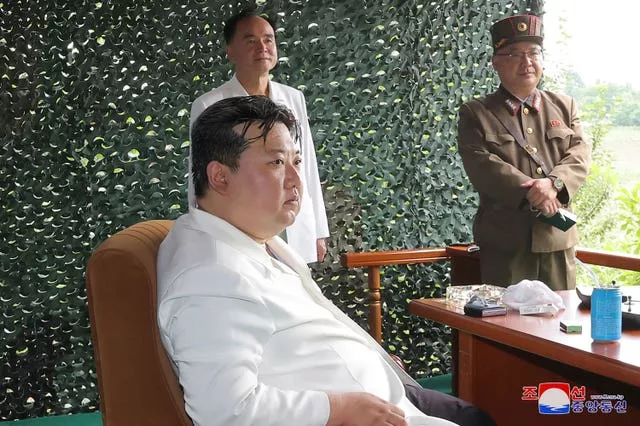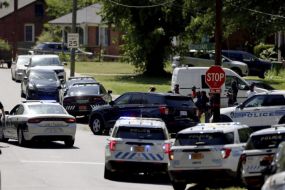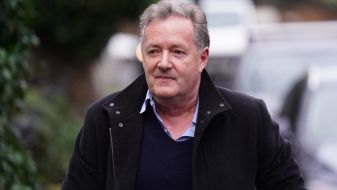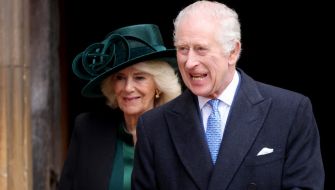North Korean leader Kim Jong Un has vowed to further bolster his country’s nuclear fighting capabilities as he supervised the second test flight of a new, powerful intercontinental ballistic missile designed to strike the mainland United States, state media reported.
Mr Kim’s statement suggested North Korea would ramp up weapons testing activities to expand its arsenal in response to recent US steps to enhance its security commitment to ally South Korea.
“(Mr Kim) clarified again that there will be no change and vacillation in the strategic line and policy of (the North Korean) government to steadily accelerate the development of more developed, effective and reliable weapon system,” the Korean Central News Agency said.
Mr Kim said North Korea is compelled to bolster the country’s “nuclear war deterrent” because the security environment on the Korean Peninsula “is being seriously threatened by the hostile forces every moment”.

The Korean Central News Agency reported Mr Kim’s comments a day after the launch of the Hwasong-18, which was first test-fired in April and which Mr Kim has called the most powerful weapon of his nuclear forces.
The road-mobile ICBM has built-in solid propellant, which makes it more difficult to detect in advance than liquid-fuelled missiles.
KCNA said the launch was meant to reconfirm the technical credibility and operational reliability of the missile.
Mr Kim called the launch “another important stride” in efforts to boost the North’s strategic forces, KCNA said.
According to KCNA, the missile was launched at a high angle to avoid neighbouring countries.
It flew 74 minutes and a distance of 1,001 kilometres (622 miles) at a maximum altitude of 6,648 kilometres (4,130 miles) before landing in a targeted area in the open waters off the North’s east coast.
The missile’s flight time is the longest recorded by any weapon launched by North Korea.
If launched on a standard trajectory, the missile could fly to the mainland US, though some experts say North Korea still has some technologies to master to acquire functioning nuclear-armed missiles.

South Korea, Japan and the United States criticised North Korea over the launch that they said posed a threat to regional and international peace.
Adam Hodge, a spokesperson for the US National Security Council, said in a statement that the US will take all necessary steps to ensure the security of the American homeland and South Korean and Japanese allies.
The United Nations Security Council scheduled an open meeting late on Friday afternoon to discuss the ICBM launch at the request of the United States, Albania, France, Japan, Malta and the United Kingdom.
Wednesday’s launch violated UN Security Council resolutions that ban any North Korean launches using ballistic technologies.
But it is unclear if the council can impose new sanctions on North Korea because China and Russia, both veto-wielding permanent members, had blocked the US and others’ previous attempts to do so over North Korea’s other recent ballistic launches.
South Korea’s military said on Thursday it maintained a firm readiness to repel potential provocations by North Korea and was pushing to achieve “peace through strength”, based on the strong military alliance with the United States.
Joint Chiefs of Staff spokesperson Lee Sung Joon said the South Korean and US authorities agreed to maintain a solid joint defence posture after the North Korean launch.
Mr Kim said North Korea will take “a series of stronger military offensive” until the US and South Korea “admit their shameful defeat of their useless hostile policy toward (North Korea) in despair and give up their policy”.

That signals Mr Kim will intensify his push to modernise his missile arsenals with sophisticated weapons like the Hwasong-18.
Other weapons on Mr Kim’s publicly stated wish list are a multi-warhead missile, a hypersonic weapon, a spy satellite and a nuclear-powered submarine.
North Korea has been focusing on reinforcing its nuclear capability after Mr Kim’s high-stakes nuclear diplomacy with then-US president Donald Trump collapsed in 2019 due to disputes over US-led sanctions on North Korea.
KCNA accused the US and South Korea of recently taking “frantic confrontation attempts” and bringing “a new chain of nuclear crises” to the Korean Peninsula.
North Korea often issues such harsh, warlike rhetoric in times of tension with its rivals.
The KCNA dispatch cited a US-South Korean agreement to strengthen the allies’ deterrence capabilities such as the periodic docking of a US nuclear-armed submarine in South Korea and the establishment of a new bilateral nuclear consultative group, whose inaugural meeting is slated for next week in Seoul.
The United States has expanded military drills with South Korea and taken steps to enhance “regular visibility” of US strategic assets to the Korean Peninsula in response to the North’s advancing nuclear arsenal.
North Korea has conducted about 100 missile tests since the start of 2022.
Experts say Mr Kim eventually aims to use his enlarged arsenal to win greater concessions in future diplomacy with the United States.
Wednesday’s ICBM launch came two days after Mr Kim’s sister and senior adviser, Kim Yo Jong, threatened “shocking” consequences to protest over what she called provocative United States reconnaissance activity near its territory.
The US and South Korean governments dismissed the North’s accusation as groundless and urged it to refrain from escalatory actions.







